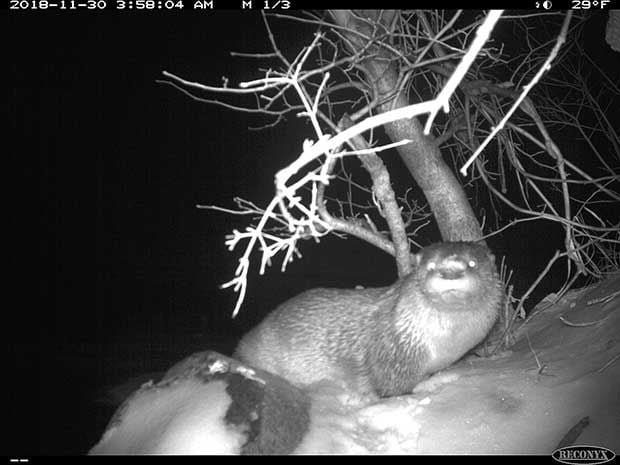River otters (Lontra canadensis) establish latrines (discrete sites where otters regularly deposit scats, urine, and anal secretions) in riparian areas as scent-marking sites to establish territorial boundaries. Surveys to detect latrines are often used as a surrogate for determining the presence and distribution of otters in aquatic systems. What if those latrines can help biologists track other animals too? That’s the question otter researcher Tom Serfass set out to answer using camera traps to determine if carnivores other than otters were attracted to scents at latrines.
The findings? Overall, carnivore detections at latrines were approximately 10 times higher than at non-latrine sites, and overall carnivore richness and biodiversity were likewise much higher at latrines. Outcomes of the studies provide compelling evidence that placement of camera traps at otter latrines may serve as a new and novel approach for monitoring carnivore populations in riparian areas. Join Tom to learn more about these findings.
Tom Serfass is a professor of Wildlife Ecology in the Department of Biology and Natural Resources at Frostburg State University, and is the North American Coordinator of the International Union for the Conservation of Nature and Natural Resources’ Otter Specialist Group. He has worked with river otter conservation for over 25 years, having conceived and supervised the Pennsylvania River Otter Reintroduction Project. Tom also coordinated research for the New York Otter Project and served as a consultant for the reintroduction of river otters in New Mexico. Most recently Tom has been conducting research with spotted-necked otters at Rubondo Island National Park, Tanzania, and NA river otters in the Greater Yellowstone Ecosystem and the Potomac River in West Virginia and Maryland, USA.


